Giant pandas can only be found in Sichuan, Shanxi and Gansu Province, in western China. Scientists estimate that there are less than 2,000 giant pandas left, whom 80% live in Sichuan. Luckily they were included on the international endangered species of wild flora and fauna list and, in the last years, important steps were taken to preserve them.
In order to protect the giant pandas in 1987 Chengdu’s government opened the Chengdu Research Base of Giant Panda Breeding, which imitates the natural habit of the animals. Visiting the center is also the easiest way to see the pandas.
How and when can I get to the Chengdu Research Base of Giant Panda Breeding?
The center is located about 10 Km away from Chengdu’s downtown, it opens at 7:30 in the morning and closes at 6 pm. The ticket costs 58 yuan and the best time to go there is between 9 and 10 am so you can assist to the breakfast (I shot the above videos on July 2011, around 9:30 am).
You can go there by taxi (it’ll cost you about 30 yuan), take the line 3 of the metro and get off at the stop “Panda Avenue”, or take one of the many bus that stop in Panda Avenue.
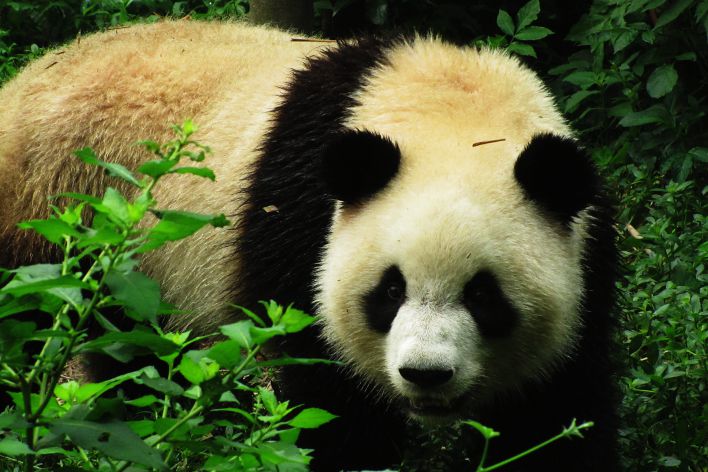
The easiest way is to reach the center is to get a “tour.” About any hostel or hotel in Chengdu will arrange it for you. While I was in Chengdu I was staying at Chengdu Nova Traveller Lodge, that I chose because it was cheap, had a reliable internet connection and decent food.
Click here to read our recommendations for booking an hotel in Chengdu.
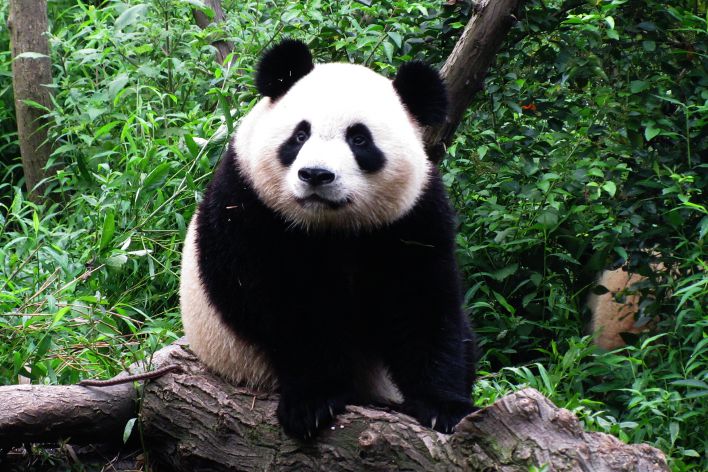
They also provided basic tours to the panda center, basically a minivan that would pick you up at the hostel, bring you to the center and wait for you. I paid 140 yuan for the minivan and the ticket, so at the end I would have spent about the same amount of money by taking a cab. Obviously it would have been cheaper if I took a public bus (around 70 yuan in total) but the price difference was so small that I didn’t bother to figure out how to do. Also, on the minivan there were other travelers like me so I meet some interesting people.
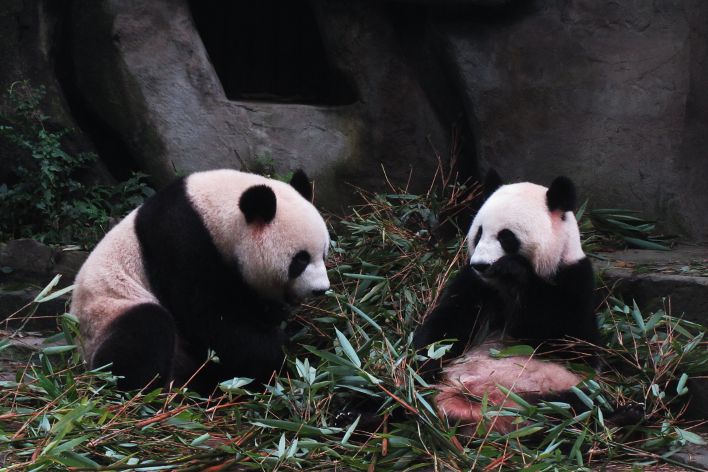
What to do at the panda center?
You’ll see both the giant and red pandas. You’ll be quite close to them and will have the possibility to take pics of the animals even with a compact camera (I took the pics and videos on this article with a simple point and shot Canon PowerShot camera as at that time I didn’t have my reflex yet).
You can find some pandas also at Beijing zoo but they are in a cage and quite sad. Here, as you can see on the pics, they can move freely in a park that look likes their home country on the forest and they don’t look sad at all.
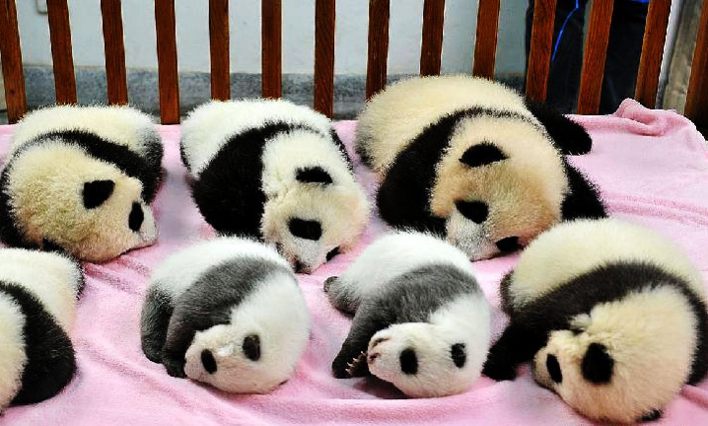 Thanks to Federica Dora for the pic of the puppies!
Thanks to Federica Dora for the pic of the puppies!
Finally, you’ll see the baby pandas and, if you want to go over the top, you can carry a young panda for a few minutes and take pics with him (it costs 2,000 yuan, I chose to don’t carry any pandas).
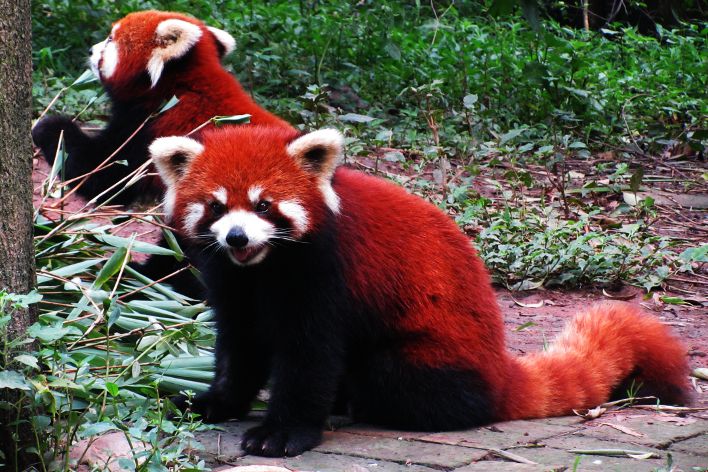
At the coffee shop close to the entry of the center you can also watch a long video about the pandas. I didn’t bother to watch it as I was more interested on observing the red pandas, which were my favorite. It’s funny because before that day I didn’t even know that red panda existed!
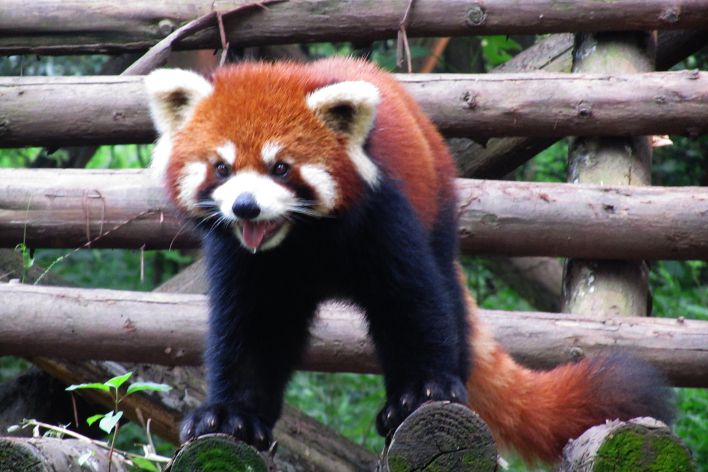
Overall it was a great experience and if you’re in Chengdu I recommend you to visit the panda center!
China and Pandas: A (Very) Modern Love Affair – by Taylor Hartwell
Although it’s easy to forget while in one of China’s many, many enormous (and gray) cities, this nation is home to a wide variety of some of the planet’s most incredible animals. Just a quick look at the Chinese zodiac signs reminds one of the biodiversity (monkey, tigers, snakes and so on).
There’s yaks and camels in the West, tigers in the North, golden monkeys in the South, pink dolphins and prehistoric sturgeon swimming around Hong Kong and the Yangtze River, and of course, everyone’s favorite black and white furballs roaming around the forests and mountains chomping on bamboo.
Or rather, there were.
*Obvious Spoilers Ahead*
To what I hope is the surprise of absolutely no one reading this, pretty much all of China’s most famous animals are either critically endangered or already extinct. Of course, there are plenty of *standard* reasons for this – deforestation, pollution, urbanization; you know, the classics.
No one, least of all myself (a millennial American born into the post Clean Air/Clean Water Act world) should be pointing any fingers when it comes to the destruction of animal habitats as a side effect of modernization.
China has had unprecedented growth at record-breaking speeds; the resulting destruction of the environment has been fairly predictable. I’m not making a value judgment one way or the other – the case can be made in either direction.
Basically, it’s “you can’t blame us for doing the exact same thing you did to modernize” versus “you had at your disposal all of the history and hindsight of the 19th and early 20th centuries and willfully made the same mistakes”.
That’s an argument that can and does fill several books all by itself and not what I’m here for today.
Of course, it’s worth noting that it’s not only the side effects of modernity killing off China’s animals. Chinese Traditional Medicine drives demand for all kinds of bits and pieces of various creatures – and not just in China.
Personally, I’m not quite as willing to be impartial on this issue: sure, I’m not judging the poacher who kills a rhino in Africa to feed his family, but I sure as hell am going to judge the rich Chinese businessman who pays a small fortune for said horn.
If you really think that some ground-up keratin is going to cure your gout, I encourage you to try fingernail-biting and/or hair-chewing before taking more drastic, extinction-y actions.
And besides, even if every powdered animal chunk and bottle of literal snake oil performed as advertised, it wouldn’t change the fact that Viagra would have been a whole lot harder to get past the FDA if you had to go around chopping off tiger man-bits to make it.
But more on the virtues of Chinese Traditional Medicine another time. Today I want to talk about pandas.
The giant panda is pretty obviously China’s most iconic endangered animal. The World Wildlife Fund – and they should know, pandas being their official logo and all – claims there are 1,864 pandas left in the wild.
Leaving aside for now how they arrived at that incredibly specific figure – I suppose pandas are easy enough to spot – that means that China has nearly three times as many KFCs as it does National Treasures.
But we all know this. What we don’t know about pandas is…well, basically everything else. Other than their near-extinct status and predilection for starring in animated Jack Black features, I don’t feel that pandas enter the public consciousness all that often.
In fact, despite literally living 15 minutes away from the Beijing Zoo, I’m fairly confident the last time I even thought about a panda was when Baobao had to leave D.C. back in February and Americans everywhere felt a vague sense of disappointment for roughly as long as it took to get a new tab open.
Quick aside – did you know that Baobao (宝宝) just means “baby?” Yes, people do use it to colloquially mean “dear” or sometimes “treasure,” but at the end of the day, it’s the name hundreds of millions of people in China use to refer to their infants.
It’s practically a national holiday when you manage to produce one of these things, and you’re telling me that no one involved in the naming process raised their hand and suggested something more creative than “baby?” Ok, rant over.
Anyways, pandas are pretty mysterious creatures for being so over-represented in media. And in reality, the whole “pandas are the national treasure of China” thing is a modern invention.
Case in point; despite bamboo making at least an appearance in roughly 210% of all classical Chinese paintings, have you ever seen a pre-modern depiction of a panda? Good luck finding one – no such thing exists.
Seriously, give it a shot. Open up google images. I’ll wait.
While you were trying (and failing) to prove me wrong, you may have come across this FP article that points out the small issue that until about 100 years ago, no one in China (or anywhere, really) gave a flying fox (get it?) about big-bear cats.
Did I mention that yet?
There’s no Chinese word for panda. I mean, they have a “name” for pandas: 大熊猫 or sometimes 猫熊 – but those literally means “big bear cat” and “cat-bear,” respectively.
Sure, more recently discovered animals in every language get named with a combination of other animal’s names, but that’s the point – Chinese has original, dedicated characters for dog (狗), cat (猫), bear (熊), mouse (鼠), monkey (猴), and snake (蛇), but not panda.
They even have a character for dragons (龙), which – not to burst anyone’s bubble here – don’t actually exist. In fact, all of the zodiac animals have original characters because all of those animals (including dragons) have been important parts of Chinese life and/or culture for generations.
Pandas – quite conspicuously not featured in the unchangeable list of zodiac animals – have not. The fat fuzzballs simply didn’t matter to anyone until very recently.
To paraphrase Pete Holmes: I feel some of you backing away because you like pandas. My point is not “I hate pandas.”
No, my point is that the only reason pandas have taken on this role of China’s national treasure (and animal conservation in general) is because they’re a.) adorable and b.) happen to be color-coded to China’s most important philosophical symbol.
In fact, pandas are a perfect representation of the whole issue of how we pick and choose what animals to care about. The history of pandas in China is debated and hard to get impartial information about because everyone retroactively wants to make it look like they held the cats-in-Egypt role for the emperors.
Some sources say that even in ancient China, people revered pandas. Some sources say that they thought they were monsters. Some say that they thought panda fur could ward off ghosts – more on that later.
But one thing is certain – pandas were NOT the real-life equivalent of the Chinese dragon back in the day. No museum features old scrolls with panda seals. No palace or ruin we’ve ever dug up has statues of the lil’ guys. The Terracotta Army does not feature a few big-bear-cats.
At the risk of offering up a condescendingly obvious conclusion here, people really only started loving pandas when video technology allowed them to start charming the parts of the world with enough money and free time to value cuteness above usefulness.
These are, after all, terribly-camouflaged bears that lack the energy to have sex because they can’t be bothered to eat anything besides bamboo. For all the majestic and evolutionarily-perfected creatures China has done its best to wipe off the map – tigers, sharks, monkeys, etcetera – we’ve turned these fat balls of fuzz into the international symbol of wildlife conservation.
And again, I’m not saying pandas are *bad* (whatever that would mean) or even that we should just let them die out – just that their symbolic place in the world makes no sense.
So, is there a conclusion here?
Not really, I guess.
I’m not an animal rights activist (I live in China, after all), nor am I advocating for the extinction of giant pandas (as I am not, in fact, a Captain Planet villain).
People aren’t going to stop finding cute things cute; nor are massive droves going to start donating their time and money to saving the Aquatic Scrotum Frog. The WWF isn’t going to change their logo, nor should they – pandas are cute, people love them, and they’ve doubtlessly done a lot of good for a lot of far less cute species thanks to the money donated with pandas in mind.
So, I guess my ground-breaking theory here is that people can sometimes be illogical and that questioning things that seem obvious is a valuable use of time. Tune in next time: I’ll be explaining the finer points of water being wet.



